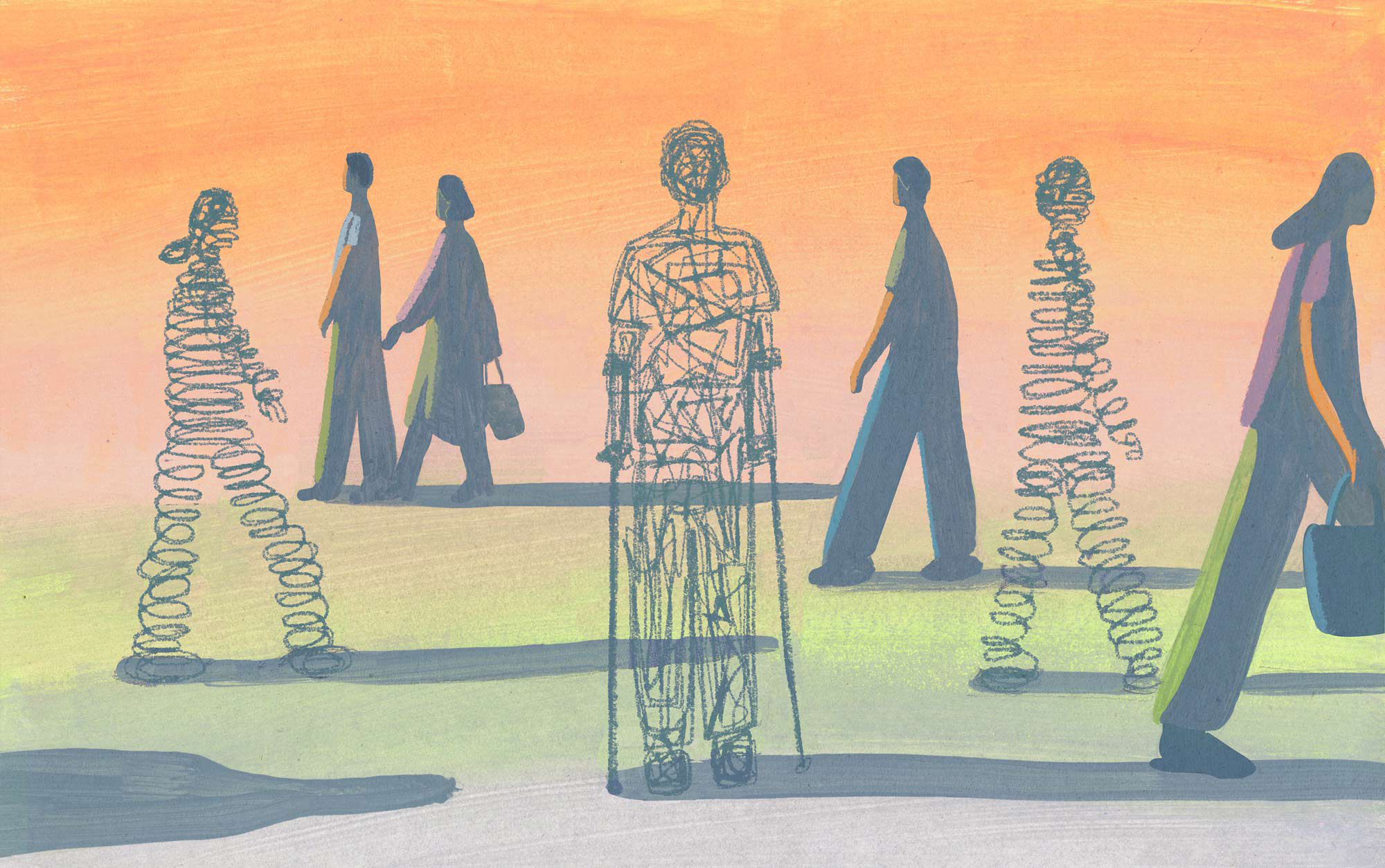“Today, I have no pain,” says Sara Purinton, a doctoral candidate in philosophy in Penn’s School of Arts & Sciences who deals with chronic pain in her arms and hands. “In certain ways, at least, I’m inhabiting an abled body.”
Millions of people wake up every day in bodies that are not “abled”—where mobility is impaired, sight or hearing is limited, where injury or disease has permanently altered function. In the United States, the wars in Afghanistan and Iraq have created nearly four million disabled veterans. More than 25 million Americans say they have long COVID, defined by a wide range of health problems.
“One of the truisms of disability is that if we survive long enough, we’ll all be disabled,” says Heather Love, professor of English. Love is a scholar of gender and sexuality studies and queer studies whose interests expanded to disability studies around 2010. In 2019 she suffered a stroke that left her legally blind and unable to drive a car or to read ordinary print. “It can seem like a niche field, but I think those tools are really helpful in navigating what it is to have a body and be mortal.”
The pandemic has brought questions about disability and access to the fore, raising issues such as whether some of its effects might be considered disabilities and what it’s like to not be able to get to school, work, or to see family and friends.
A growing academic movement is looking at how disability is seen in history, art, and the world. It’s focused not only on increasing knowledge but on making a positive difference. “I think at the most basic level, it’s really about advancing the welfare of people with disabilities,” says Love. “And that can include everything from having access to a broader array of culture to reducing stigma to legal inclusion. There are a lot of things that are necessary to make it possible to thrive.”
Love, Purinton, and other School of Arts & Sciences scholars are examining the history of disability in the United States—one of discrimination and advocacy, technical advances and failed fixes, paranoia and persistence. They’re highlighting how disability is represented and how to appreciate and accommodate difference. And they’re thinking about how (or if) disability can be defined, and how that identification affects individuals.
Beth Linker, the Samuel H. Preston Endowed Term Associate Professor in the Social Sciences and Chair of the Department of History and Sociology of Science, explores the history of disability, and shows that the modern concept of disability is tied to the industrialized workplace and veteran welfare.
Leah Samples, a graduate student in history and sociology of science, is working to understand and amplify the experience of blind Americans. As an AmeriCorps volunteer at an assistive technology center in Nashville, Tennessee, Samples saw the structural forces and issues with access—to health care, transportation, technologies—that shape life for many disabled Americans. She interviewed 100 legally blind residents, asking them about their day-to-day life and what barriers they faced. “What really became clear to me was just how much discrimination blind Americans face, really unique to the experience of being blind,” she says.
Read more in the Spring/Summer 2023 edition of OMNIA.








